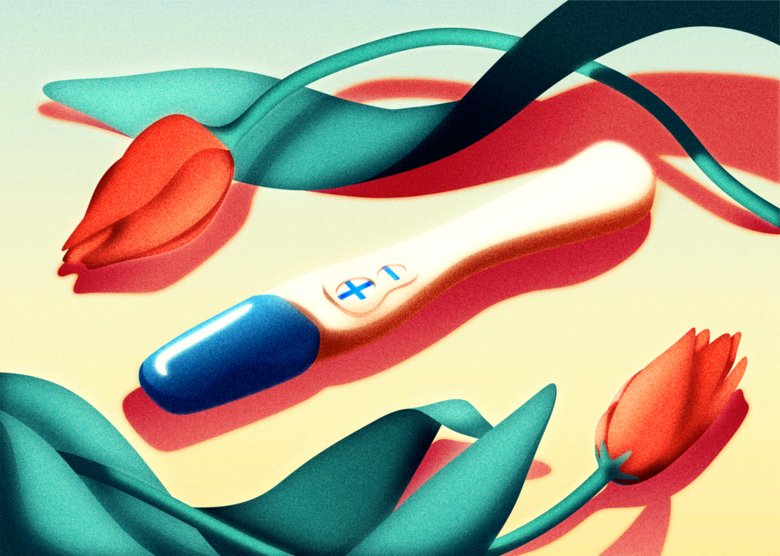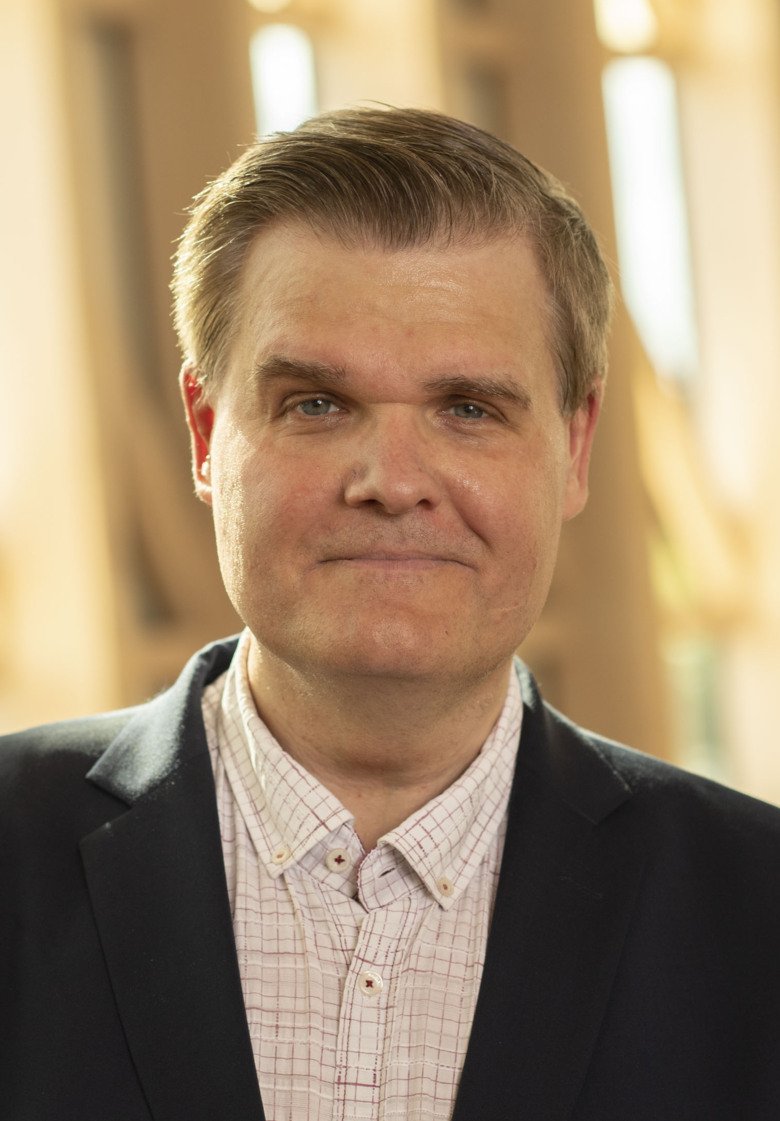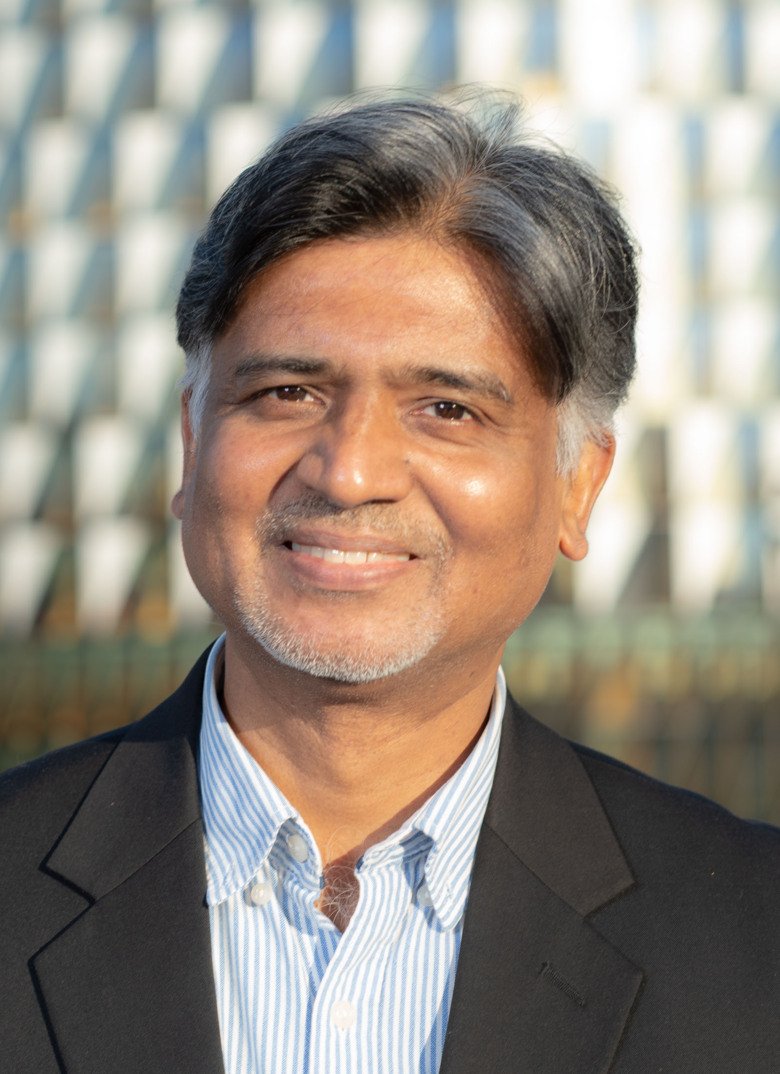The dream of becoming someone's parent

According to the WHO, almost 50 million couples worldwide are involuntarily childless while demand for assisted fertilisation is expected to grow as treatments have become both more effective and more widely accessible. Read the first article from a in-depth series about infertility from KI’s Swedish popular science magazine.
Text: Annika Lund for the magazine Medicinsk Vetenskap no 1, 2022 | Spotlight on infertility
It is well-known that as prosperity increases, women give birth to fewer children on average. Consequently, at global level, women are having fewer children. In 1950, women at global level had an average of 4.97 children. Almost seven decades later, in 2019, the women of the world had an average of 2.31 children each. This decline is expected to continue. A forecast published in The Lancet in 2020 states that in 2100, women around the world are expected to give birth to 1.66 children on average, based on calculations that factor in greater access to education and contraception.
This trend is also seen in Sweden. In 1950, a woman in Sweden would have had an average of 2.2 children. According to the UN website Globalis, in 2020, the equivalent figure was 1.7.
In parallel with this trend of fewer births going hand in hand with rising prosperity, another trend is also taking place. Women are increasingly older when they give birth to their first child. In 1975, Swedish women were 24.1 on average when they had their first child, compared with 29.9 in 2020. Sweden’s oldest women giving birth for the first time live in Danderyd, a prosperous area north of Stockholm, where the average age was 32.7 in 2020.

However, with rising age comes a decline in ability to conceive, which affects men as well as women. This makes age the most common reason for involuntary infertility among women in welfare countries.
It is a common misconception, shall we say, that infertility is something that mainly affects women in the wealthier world. This is not the case. In fact, Andres Salumets, Professor of Reproductive Medicine at the Department of Clinical Science, Intervention and Technology at Karolinska Institutet, has found that the proportion of infertile couples seems to be about the same, at around 10 to 15 percent, across different societies, with some exceptions.
“What differs, however, is the causes of infertility,” says Andres Salumets. “In Europe and other welfare countries, age is the most common reason for difficulties conceiving. In other countries it is more common for infertility to be due to infection or injury caused in childbirth.”
Andres Salumets explains that what is known as secondary infertility, where a woman has had one child but is then unable to conceive again, possibly due to injury during childbirth, is more widespread in countries with lower welfare. In Sweden and other welfare countries, it is more common to seek assistance with conceiving for the first time.
The first “test-tube baby”, Louise Brown, was born by in vitro fertilisation in 1978. By 2010, four million babies had been born with the help of the technique, and the researcher behind it, Robert Edwards, was awarded the Nobel Prize in Physiology or Medicine.
Six million 'test-tube babies'
Since then, a further around six million 'test-tube babies' have been born. In 2019, just over 4,800 Swedish babies were born by in vitro fertilisation (IVF) according to the most recent annual report from the quality register Q-IVF. This is equivalent to 4.2 percent of babies born in Sweden that year.
More and more babies are expected to be born following IVF treatment as increasing numbers of people are seeking this assistance. IVF is also becoming more widely accessible as the treatments develop in purely medical terms and the legal right to access them is broadened. For example, single women and lesbians are now able to have IVF in Sweden, as are young people whose fertility has been impaired by treatment for cancer (see the article on pages 42–43).
Andres Salumets also expects that it will become even more common to postpone starting a family. As a rough estimate, viewed as a group, women who start trying for a baby in their thirties have about five years left of fertility that is still unaffected by age because chances of conceiving start to plummet at the age of 35. This means those longing for a large family have quite a narrow window in which to fulfil their dream. About ten years before the menopause, which happens on average at the age of 51, few women are able to become pregnant spontaneously.
“People are aware of this but it isn’t sufficiently well understood,” says Andres Salumets. “We should attempt to make this information more widespread, as a picture that runs alongside the couples over 40 sharing their delight at being pregnant on social media. In many cases, these pregnancies have been achieved using egg donation. Doctors at IVF clinics see women who are not properly informed about their fertility and who have an unrealistic idea of their chances of conceiving unassisted. But we also see many couples who are aware that fertility declines with age but where other things in life, such as gaining a secure footing in the workplace, have led to them postponing starting a family.”
Would you like society to change on that point, to shift towards a society where people start families younger?
“I’m sceptical about attempting to change major social trends to do with having children. I think what we need to do is develop the treatments that do exist so we can help more couples and people wanting help by means of assisted fertilisation,” Andres Salumets says.
Men’s fertility also declines with increasing age. This has to do with the fact that health generally deteriorates with age. Obesity, diabetes and high blood pressure become more common, for example, and all of these are factors that affect male fertility. The link is so clear that fertility can be seen as a marker for male health in general.
“Many couples are dealing with age-related infertility in the woman combined with an accumulation of diseases in the man, who then loses fertility and sometimes also sexual function. All of this affects the couple’s chances of conceiving,” says Andres Salumets.
The quality of a woman’s eggs deteriorates as she grows older and increasing age goes hand in hand with a higher risk of chromosomal abnormalities in the foetus. Attempting to understand why a higher age in the mother leads to more eggs with chromosomal abnormalities is described as a research goal in reproductive medicine and Karolinska Institutet is one of the institutions conducting research on this issue. The quality of sperm also deteriorates as men age. However, this leads to other types of changes, such as abnormalities in individual genes, which can lead to a number of different diseases in the foetus.
In an international context, children born through IVF run a higher risk of being born prematurely, having a low birthweight or being small for their age. However, this is explained by the increased risk of multiple births, mainly twin pregnancies, which IVF can involve if more than one fertilised egg is put back into the womb.
In Sweden, the healthcare services have worked actively to reduce the number of multiple births. Since 2003, a binding regulation from the National Board of Health and Welfare has laid down that as a rule “only one fertilised egg is to be placed into the woman’s body”, unless the risk of twins is judged to be small.
Consequently, the number of multiple births has fallen “dramatically” in Sweden according to a 2019 report by the Swedish Society of Obstetrics and Gynaecology, SFOG. The number of multiple births in conjunction with IVF is now down to almost the same levels as the number of multiple births in spontaneous pregnancies. This has also dramatically reduced the risks of premature births and low birthweight among Swedish babies born through IVF.
Not a cause for concern
The same report states that there are risks of other problems, including a slightly increased risk of certain malformations in these babies. However, this is judged not to be due to the IVF technique itself but to factors in the parents, i.e. something in the people who use assisted fertilisation is producing this higher risk.
This slightly increased risk should not be cause for concern, though, according to Andres Salumets, who says that the vast majority of babies born following IVF are completely healthy:
“These babies are the best-studied babies in the world,” he says. “Pregnancy is a powerful filter. Miscarriage is a hard blow for couples undergoing IVF but miscarriage is usually caused by there being a problem with the pregnancy. The same couple can conceive again and have a healthy baby.”
Nevertheless, the fact that fertility treatments mean that more babies are being born to older parents, which itself carries a higher risk, is one of many ethical questions that reproductive medicine needs to address.
“We have good prenatal screening programmes. We can carry out non-invasive tests and obtain a large amount of information about the foetus before it is born. It is possible, for example, to identify genetic abnormalities and potentially to make the decision to end a pregnancy,” says Andres Salumets.

But age is only one of many reasons why couples find it hard to conceive. Another common reason is endometriosis in the woman, where the endometrium, the lining of the womb, spreads outside the womb. This can affect not only the quality of the egg but also the environment in the womb. According to some estimates, 20 to 25 percent of women who are infertile have endometriosis, while other estimates put this figure even higher. Another explanation for childlessness can be PCOS, polycystic ovary syndrome, where the ovaries produce too much testosterone, leading to too few eggs maturing.
Male infertility is usually caused by the man having few or no sperm, or by his sperm being poor swimmers. But where the boundary should be drawn defining a specific number of sperm as being too few is a matter of debate (see article LINK).
Reduce chances of conceiving
Some lifestyle factors also reduce chances of conceiving. Smoking affects eggs and sperm and can lead to early menopause. Obesity also lowers both male and female fertility, as does high alcohol consumption. For women, being underweight is another risk factor. On top of this, both men and women may have their fertility reduced by having undergone treatment for cancer or having had chlamydia, for example. Childlessness is usually equally due to a problem in the woman and in the man. In about 15 percent of cases, no tangible explanation can be found.
So what do these couples feel like as they struggle to start a family?
In simple terms, many of them are stressed. Very stressed. In a thesis from 2021, Communication, coping and social networking regarding infertility, the stress that infertility can bring was compared to that following the death of a relative, serious illness or divorce. The same thesis describes how infertility is often seen as a purely medical problem while the couple undergoing the treatments are also wrestling with the psychological and social aspects linked to life possibly not going the way they hoped. Many people often lack someone to talk to about their emotions and thoughts, making social media or blogging about their own situation a way of managing it.
According to the quality register for IVF in Sweden, Q-IVF, approximately one in four IVF attempts in 2019 resulted in pregnancy and the birth of a live baby. This means that three-quarters of attempts did not have the outcome the couples longing for children wanted.
At the same time, an estimated approximately two-thirds of the entire patient group ultimately have a baby following treatment but this figure varies with different age groups. This means that the majority have more than one round of IVF. And that more than one round fails.
“Some couples have a tough time and suffer worry and anxiety. Some couples whose treatments fail repeatedly can find it very hard and it can feel difficult for the doctors and the staff in the lab too,” says Andres Salumets.
One common question from patients is whether the stress itself can affect the outcome of the treatment. There do not appear to be any clear answers to this. A study entitled UppStART of just under a thousand people who had undergone IVF in Uppsala or Stockholm did not find such a link. According to the study, no link could be seen between self-reported stress and measured cortisol levels before IVF and the subsequent outcome, measured in terms of factors including the quality of the embryo and whether conception was achieved.
The stress of IVF
Other studies tell a different story, however. The SFOG report on involuntary childlessness from 2019 briefly states that it is “debated” whether the stress of IVF can affect the outcome of the treatment itself. The SFOG report also cites studies showing that couples who receive psychological support during their IVF treatment do in fact have better outcomes, measured both in terms of how they feel and in terms of conception rates.

Lalit Kumar Parameswaran Grace, docent and researcher in reproductive medicine at the Department of Women’s and Children’s Health at Karolinska Institutet, has worked clinically in IVF clinics in Sweden and India. He emphasises that childlessness is also a social problem that can have a more or lesser tangible impact in different cultures.
“In some parts of India, couples who do not have children become socially isolated,” says Lalit Kumar Parameswaran Grace. “Others look down on childless couples. In India I have seen childless couples no longer being invited to weddings or baptisms, for example, because they don’t have children. We don’t see this in Sweden or in the rest of Europe.”
Some of his research seeks to improve IVF outcomes, so that more treatments lead to pregnancy. This uses spare embryos from IVF clinics, with the consent of the parents. The IVF clinics grow the fertilised eggs in a liquid for several days before returning them to the woman’s womb. Lalit Kumar Parameswaran Grace thinks that studying the liquid in which the embryos are grown can provide important clues.
“Briefly, we want to attempt to create a molecular test that identifies good quality embryos. Today which embryo is transferred back into the woman is decided by an embryologist looking at all the embryos and assessing their quality. We are looking for molecular traces from those embryos that resulted in pregnancy.”
Using the same method, Lalit Kumar Parameswaran Grace and his colleagues hope to be able to develop a way of identifying potential diseases or genetic disorders in the embryo. Today this is done by taking a few cells from the embryo and studying them. Making diagnoses by finding traces in the fluid would be a less intrusive method of embryo diagnostics.
“We hope to be able to find molecular fingerprints in the fluid in which the embryos are grown,” he explains.
A molecular dialogue
Lalit Kumar Parameswaran Grace and his colleagues are also interested in what has been poetically called 'a molecular dialogue' between the endometrium, the lining of the womb, and the embryo. They influence each other and they must work together for conception to be able to take place. For example, the endometrium secretes different substances that make the embryo grow. But once the embryo has grown, it releases substances that make the endometrium more receptive.
To study this molecular dialogue, Lalit Kumar Parameswaran Grace and his colleagues have produced a 3D-model of the endometrium, made from cells donated by women who conceived without medical assistance. Studying fertility using mice, rats and other test animals is problematic; rats, for example, are highly fertile and it is difficult to replicate the situation of a woman seeking help at the end of her fertile period of life.
“We have now identified substances excreted by high-quality embryos. Our next step is to expose our artificial endometrium to these substances and see how they affect it,” says Lalit Kumar Parameswaran Grace.
Ultimately, this might lead to certain substances being added to the womb in conjunction with IVF, the vision being to be able to influence the environment in the womb, making it more favourable for a pregnancy. But as yet things are only at the trial stage.
Andres Salumets is also researching the molecular dialogue between the embryo and the endometrium; research that has already led to discoveries being used in IVF clinics around Europe. The research involves taking a piece of the endometrium of the woman in a menstrual cycle prior to IVF and analysing different gene expressions in the extracted cells. This makes it possible to obtain an exact picture of how quickly the endometrium matures, or thickens, in the woman being studied. Once this is known, it is possible to determine exactly which day an embryo should be transferred, a factor that can vary between different women.
“Up until now, IVF treatments have been fairly similar for all women, but we ought to factor in more individual aspects of the couple, and that’s something we will be starting to do. This test is one step in that direction,” says Andres Salumets.
Everything so far only applies to heterosexual couples who are involuntarily childless for different reasons but childlessness is something that also affects same-sex couples and single people. It is now legal in Sweden to provide medical assistance to lesbians and single women wanting to have a baby but there are no medical treatments to offer male couples or single men longing for a baby.
“This is a completely unresolved question. We can only say that humans are very inventive so we are going to see many interesting family solutions in the future. Society needs to have some kind of solution for men who desperately want children too,” says Andres Salumets.
Facts about infertility
Causes of infertility in men
- Low sperm quality, e.g. due to a hereditary disorder, infection or malformation
- Blocked sperm ducts, due to rupture or prostate surgery
- Impotence, e.g. due to diabetes
- Antibodies to own sperm
- Hormone deficiency, e.g. due to brain tumour
In women
- Hormone disorders such as polycystic ovary syndrome (PCOS)
- Turner syndrome (genetic disorder where one X-chromosome is wholly or partially missing)
- Endometriosis
- Being extremely overweight or underweight
- Damaged Fallopian tubes
- Early menopause
- Uterine fibroids
In both men and women
- Cancer in the reproductive organs
- Damage to ovarian or testicular tissue due to chemotherapy
- Chromosome abnormalities and inherited genetic disorders
- Stress
- Age
Text: Helena Mayer, first published in Medicinsk Vetenskap no 4, 2010
PCOS and endometriosis
The most common cause of ovulation problems is polycystic ovary syndrome (PCOS), which affects 5-10% of all women of childbearing age. PCOS has hereditary origins and can lead to increased production of the male sex hormone testosterone and problems with insulin and blood sugar balance.
The disease results in numerous small cysts - immature follicles - in the ovaries, failure to ovulate and irregular periods. PCOS is treated through diet, exercise, weight loss and contraceptive pills. If a woman with PCOS wishes to conceive, medication and follicle-stimulating hormone can be used to stimulate the maturation of follicles in the ovaries and induce ovulation.
Another common cause of infertility is the chronic disorder endometriosis, where the lining of the womb grows outside the womb itself, generally in the abdominal cavity. It often leads to blockages in the Fallopian tubes and can affect egg quality. It can also cause severe pain during menstruation and intercourse. 10% of all women suffer from endometriosis to some degree.
Text: Helena Mayer, first published in Medicinsk Vetenskap no 4, 2010
